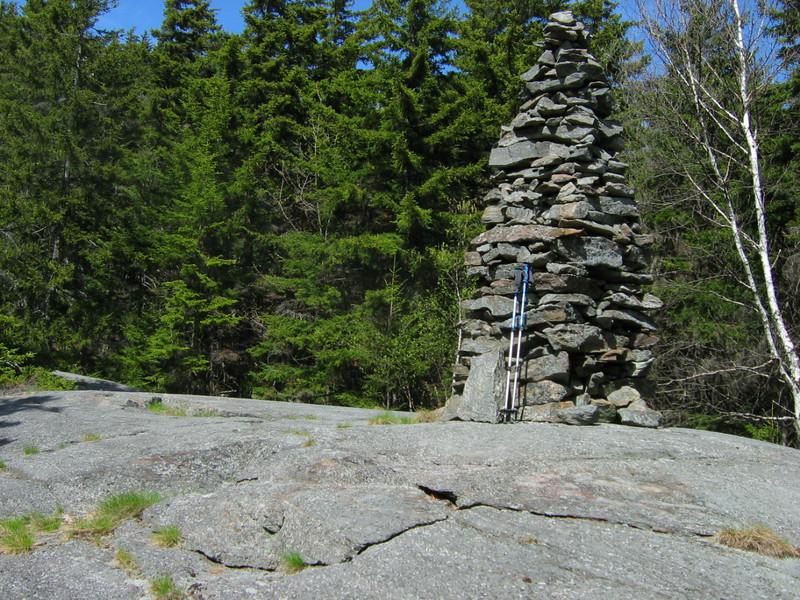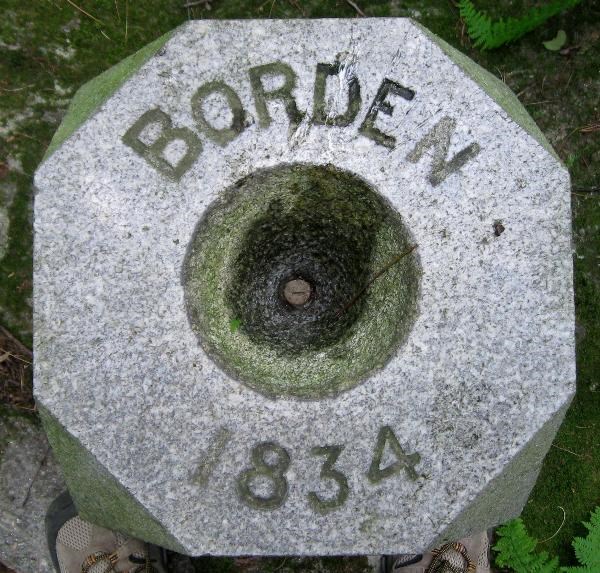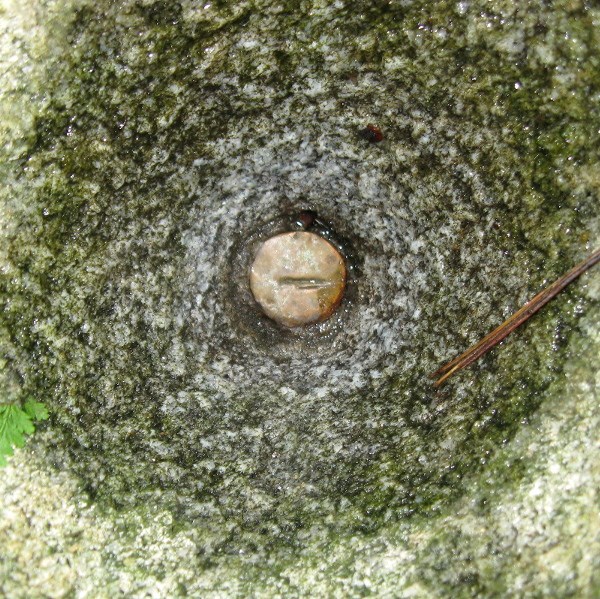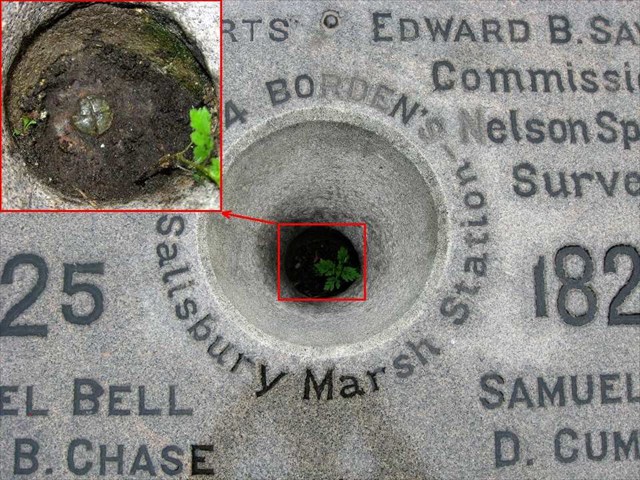Jazzbo
Well-known member
- Joined
- Jan 1, 2005
- Messages
- 1,197
- Reaction score
- 163
Papa Bear where are you? My wife and I celebrated New Years Day by hiking mighty Mt Watatic (1832') via portions of Mid State and Wapack Trails. Prior to summiting, we wandered north up to the border between Mass and NH to look for some monuments I'd heard about. We found two very interesting monuments on the spur trail at the border.
The first one monument features a hollow depression that appeared to have a pointed bottom probably for lining up the surveyor's transit. The pointy bottom doesn't show up very well in this picture, but it is there. The text reads "BORDEN 1834". the monument is on high point along the boundary. I wonder why BORDEN? Could they have spelled BORDER incorrectly?
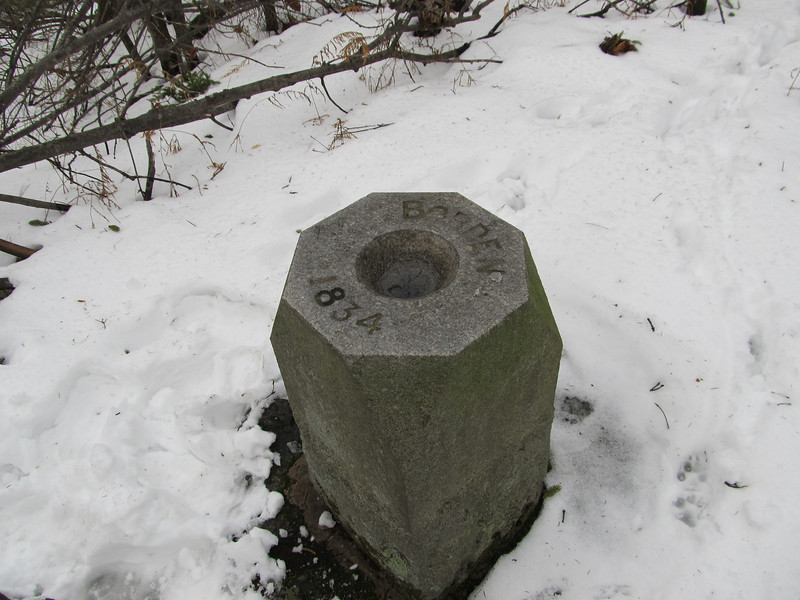
Here's a cute dog we met who has designs on this monument. Marking his territory for the dog world I suppose. He's about the size of an Aussie.
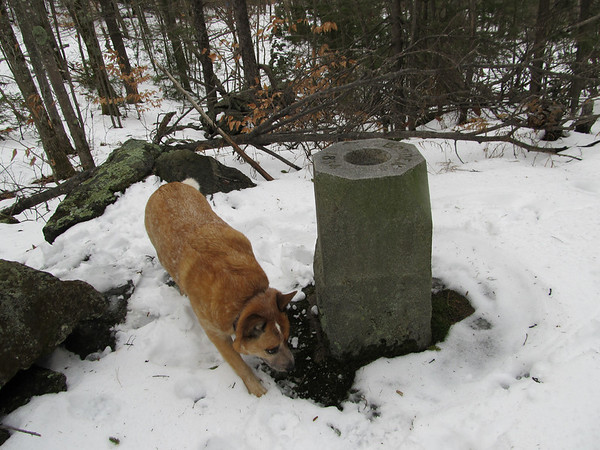
A stone wall follows the state boundary in this area. My wife is sitting on it.
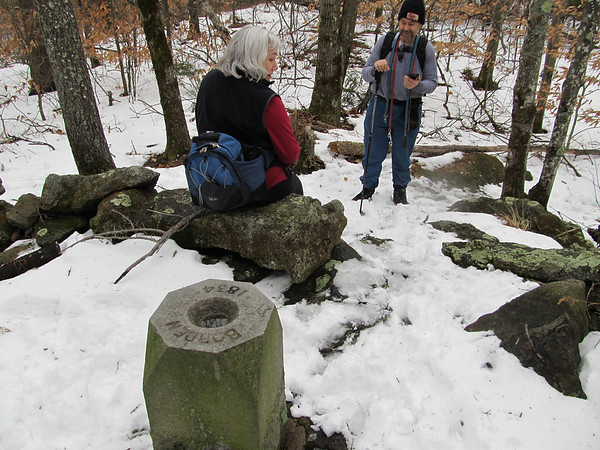
Here is the second monument. This one is located 50 yards or so downhill from the first. It is dated 1894.
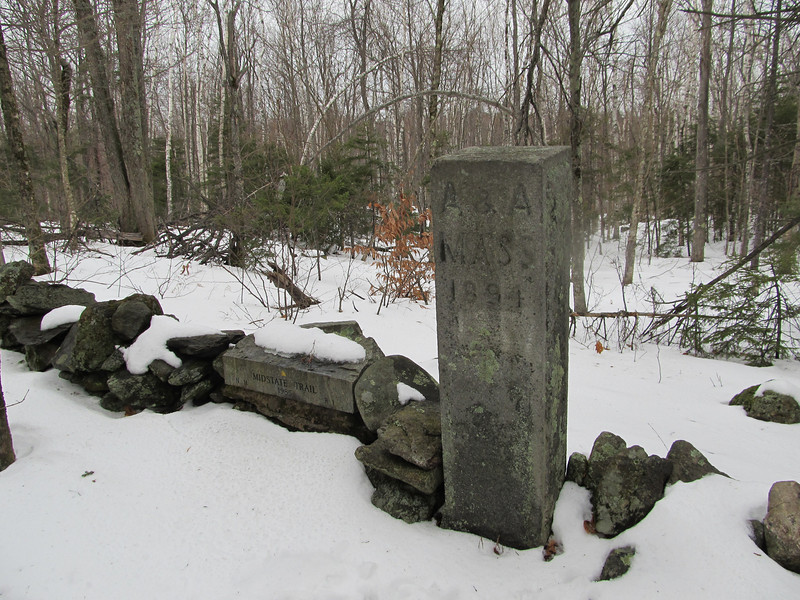
Close up of engravings on the Mass side.
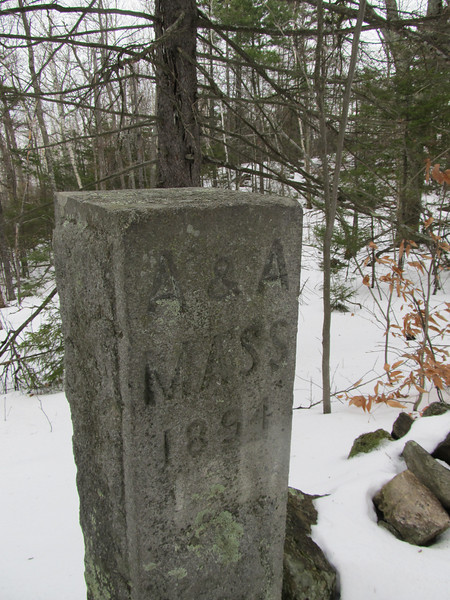
Close up of engravings on the NH side.
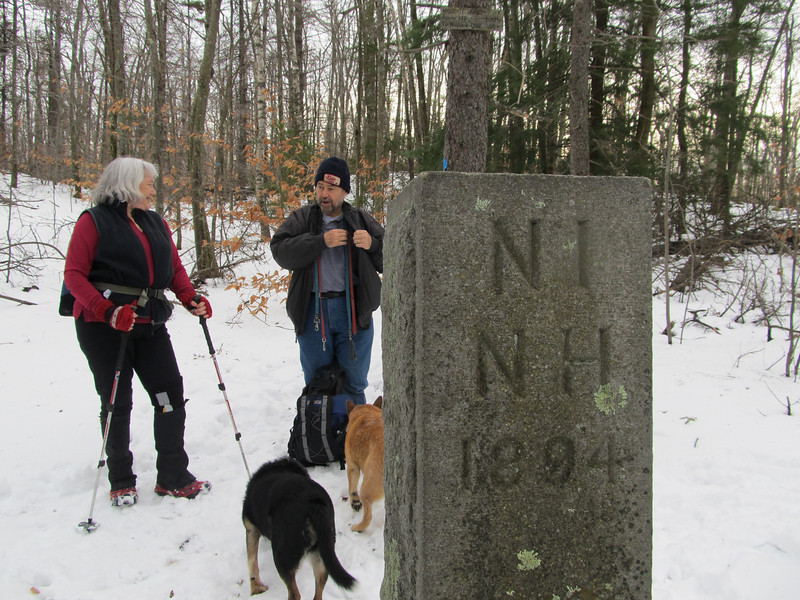
The first one monument features a hollow depression that appeared to have a pointed bottom probably for lining up the surveyor's transit. The pointy bottom doesn't show up very well in this picture, but it is there. The text reads "BORDEN 1834". the monument is on high point along the boundary. I wonder why BORDEN? Could they have spelled BORDER incorrectly?

Here's a cute dog we met who has designs on this monument. Marking his territory for the dog world I suppose. He's about the size of an Aussie.

A stone wall follows the state boundary in this area. My wife is sitting on it.

Here is the second monument. This one is located 50 yards or so downhill from the first. It is dated 1894.

Close up of engravings on the Mass side.

Close up of engravings on the NH side.

Last edited:

